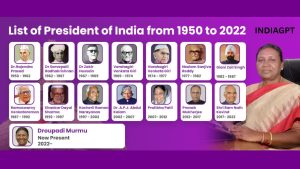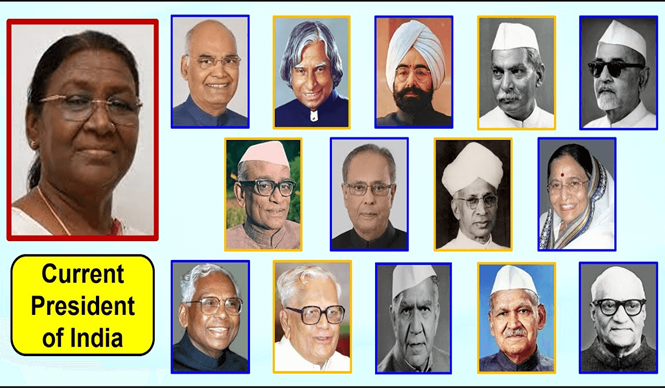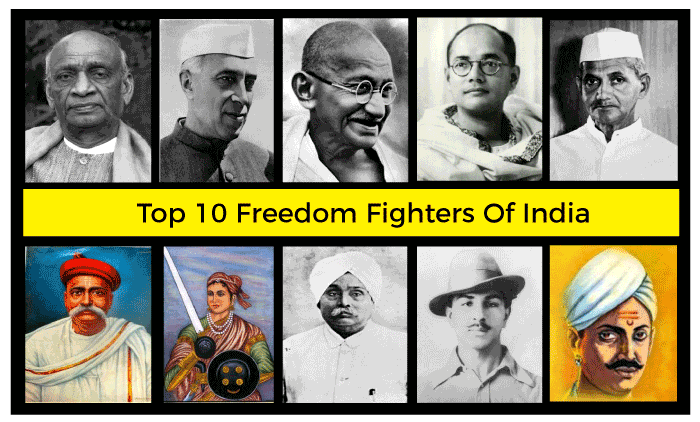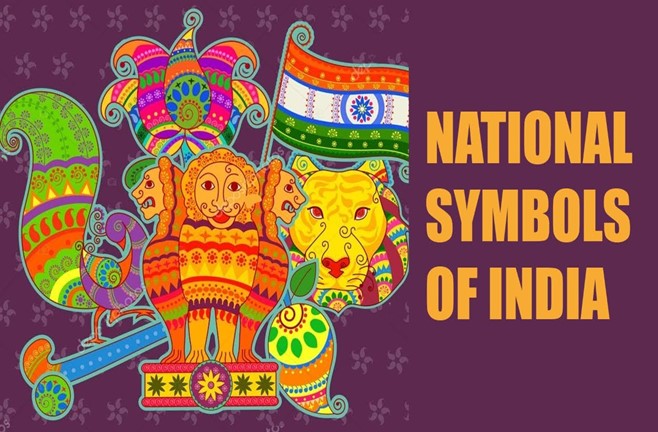The President of India is the First Citizen of the Country & functions as the honorary chief of state and, along with the Vice-President, Prime Minister, and Council of Ministers, represents an official of the Union executive. List of Presidents of India position is mainly honorary in nature, as the Prime Minister holds the actual executive power as stated in the Indian Constitution.
The office of the President of India was established with the adoption of the Indian Constitution on January 26, 1950, when India became a republic.
Dr. Rajendra Prasad took the office of president of India in his initial term. The President is chosen by a committee of voters consists of members elected to the Legislative Assemblies of States and Union territories, in addition to both chambers of Parliament.
Throughout history of india, presidents have held significant positions in the executive branch of the nation, while largely avoiding from direct political engagement. With the exception of specific circumstances specified in the Constitution, they have acted on the advice of the prime minister and the government. The President holds the dual responsibility of serving as the top commander of the armed forces and as the nation’s first citizen. In addition to their right to grant forgiveness, presidents are important in the legislative process.
List of Presidents of India available on IndiaGPT.
Dr. Rajendra Prasad was the First President of India while Smt. Droupadi Murmu is the 15th & current president of the Country.
Droupadi Murmu is notable for being the first person from the tribal community to hold the office of President and is the second woman to do so after Pratibha Patil .
Here is the List of Presidents of India along with their serving period:

| 1 | Dr. Rajendra Prasad | 26 Jan 1950 | 13 May 1962 | |
| 2 | Dr. Sarvepalli Radhakrishnan | 13 May 1962 | 13 May 1967 | |
| 3 | Dr. Zakir Husain | 13 May 1967 | 3 May 1969 | |
| 4 | Varahagiri Venkata Giri | 3 May 1969 | 20 Jul 1969 | |
| 5 | Mohammad Hidayatullah (Acting) | 20 Jul 1969 | 24 Aug 1969 | |
| 6 | Varahagiri Venkata Giri | 24 Aug 1969 | 24 Aug 1974 | |
| 7 | Fakhruddin Ali Ahmed | 24 Aug 1974 | 11 Feb 1977 | |
| 8 | Basappa Danappa Jatti (Acting) | 11 Feb 1977 | 25 Jul 1977 | |
| 9 | Neelam Sanjiva Reddy | 25 Jul 1977 | 25 Jul 1982 | |
| 10 | Giani Zail Singh | 25 Jul 1982 | 25 Jul 1987 | |
| 11 | R. Venkataraman | 25 Jul 1987 | 25 Jul 1992 | |
| 12 | Dr. Shankar Dayal Sharma | 25 Jul 1992 | 25 Jul 1997 | |
| 13 | K. R. Narayanan | 25 Jul 1997 | 25 Jul 2002 | |
| 14 | Dr. A.P.J. Abdul Kalam | 25 Jul 2002 | 25 Jul 2007 | |
| 15 | Smt. Pratibha Patil | 25 Jul 2007 | 25 Jul 2012 | |
| 16 | Shri Pranab Mukherjee | 25 Jul 2012 | 25 Jul 2017 | |
| 17 | Shri Ram Nath Kovind | 25 Jul 2017 | 25 Jul 2022 | |
| 18 | Smt. Droupadi Murmu | 25 Jul 2022 | Present | |
These are the individuals who have served as the President of India since the position was established in 1950.
Below are interesting insights into the office and responsibilities of the President of India:
- Symbolic Role:
The President of India mainly fulfills an official function, while the majority of executive functions are held by the Prime Minister and the cabinet.
- Election Process:
The President is elected through an electoral body including the elected members of both houses of Parliament, as well as the elected members of the Legislative Assemblies of the States and Union territories, rather than by a direct popular vote.
- Residence:
The President’s official residence is Rashtrapati Bhavan, situated in New Delhi. With a total of 340 rooms and vast gardens, this beautiful mansion stands as one of the most vast presidential residences worldwide.
- Term and Eligibility:
The President’s tenure lasts for a period of five years and they have the possibility of being elected for another term. The eligibility criteria include Indian citizenship, a minimum age of 35, and the qualification to be a member of the Lok Sabha, the lower chamber of Parliament.
- Cultural and Educational Roles:
The President fulfills the position of a visitor for several central universities and higher education institutes in India, actively contributing to the promotion of educational and cultural excellence.
- Historical Milestones:
Notably, Dr. Sarvepalli Radhakrishnan, a highly respected philosopher and academic, served as President. Furthermore, Pratibha Patil made history by becoming the first woman to hold the office from 2007 to 2012.
- Absence of Veto Power:
Compared to the President of the United States, the President of India does not have the authority to reject legislation in the normal way. However, they can seek a review of bills and legislative proposals.
- Role in Government Formation:
The President has a vital role in the establishment of a government, particularly in a situation where no political party has a clear majority in parliament. The President selects the Prime Minister, who is chosen by the majority party or grouping, and asks them to establish the government.
- Cultural Diplomacy:
The President’s role in India’s international affairs includes receiving foreign dignitaries and carrying out state visits abroad to strengthen diplomatic and economic connections.
The facts highlight the combination of ceremonial obligations and important constitutional duties that define the Presidency in India.



